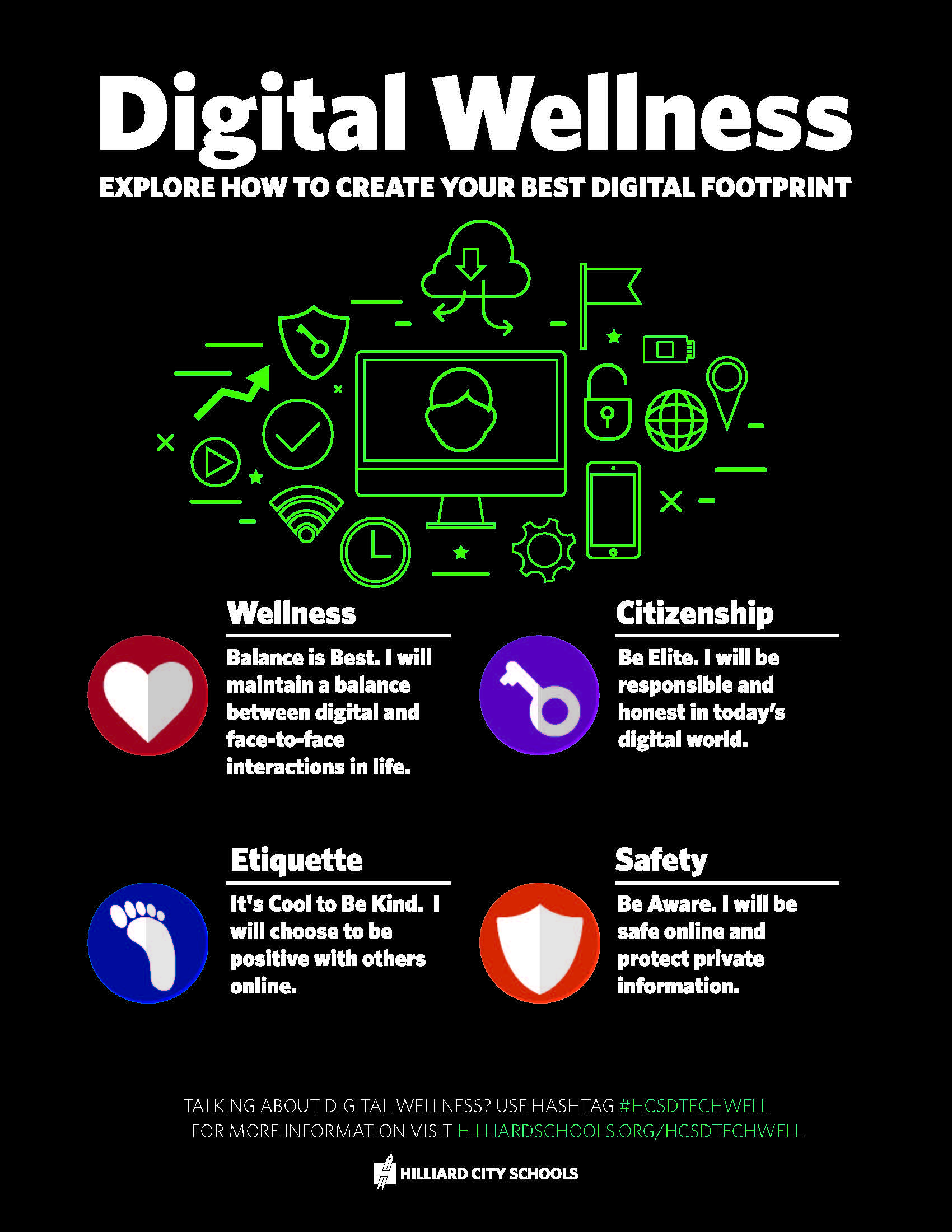Hilliard City Schools in Columbus, Ohio, launched its first-ever Digital Wellness Month to help students engage in positive, safe, legal and ethical behaviors when using technology at school and home.
Digital wellness is the appropriate use of technology—understanding the best ways to devote time to devices and knowing the kinds of behaviors and activities that are beneficial, says Chief Technology Officer Rich Boettner. “Though, sometimes, there are things we do on our devices that maybe aren’t the best for us, either emotionally or socially,” Boettner says. This is what Digital Wellness Month seeks to teach parents, teachers, and students, he adds.
The concept for Digital Wellness Month came to Boettner while he and his family were dining at a restaurant. “Virtually every single person in that restaurant was sitting with their families or friends, but they weren’t talking to each other and instead were looking at their phones,” he says.
Boettner then met with technology teachers, instructional technology coaches and district technology administrators to further conceptualize and organize Digital Wellness Month, which occurs in February.
“We felt that taking a longer period of time [the month of February] to promote it and highlight it would give the idea more prominence,” he says.
Weekly digital wellness topics
 Each week features a different topic: wellness, citizenship, online etiquette and internet safety. However, Digital Wellness Month is approached differently at the district’s 24 schools. For instance, one high school added 30 minutes to third period, dedicating the extra time to tech-life balance discussions. Another school tasked language arts teachers with enabling students to live healthier digital lives, Boettner (at right) says.
Each week features a different topic: wellness, citizenship, online etiquette and internet safety. However, Digital Wellness Month is approached differently at the district’s 24 schools. For instance, one high school added 30 minutes to third period, dedicating the extra time to tech-life balance discussions. Another school tasked language arts teachers with enabling students to live healthier digital lives, Boettner (at right) says.
Students learn about issues such as:
- protecting vision by limiting screen time and modifying screen colors
- appropriate technology behaviors that improve social interactions
- how mobile device usage impacts body posture and physical well-being
- self-moderating screen time and knowing when to take a break
Perils of excess screen time
To launch a digital wellness initiative—which could last for one day or one month—Boettner suggests that district leaders clearly communicate to stakeholders the risks of excess screen time.
“What you’re doing on your device matters,” he says. “If you’re spending time reading a book on a device, that has mostly positive effects, but if you’re spending all of your time on social media, then those effects will not necessarily be positive.”
Boettner recommends utilizing existing resources to develop and tailor lesson plans and homework activities, which can have a variety of formats, such as topic-based videos plus discussion. Boettner says he draws from the following resources for guidance:
Digital Citizenship in Edmonton Public Schools (Canada)
National Society for the Prevention of Cruelty to Children
Classroom example lessons on wellness:
Elementary
https://docs.google.com/document/d/1KjvyRscFUu2W2jShpQkwyI0Ygqz0RWse5igrG2-LYiM
Secondary
https://docs.google.com/document/d/1LMq-2gHbzUfg_2G8jv16oHe7JF1cTghYL6_fEWjL6hY
Family Activities
Hilliard City Schools in Ohio has developed a webpage for parents that includes some activities that families can do at home that dovetail with the lessons that students are doing at school.


